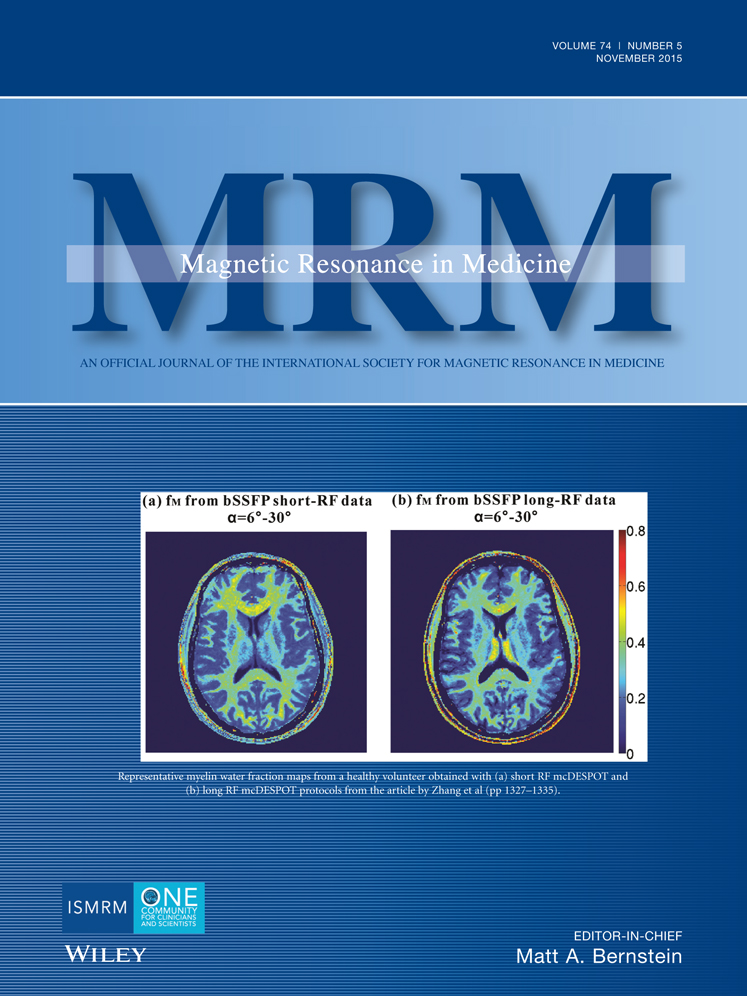Exploring the bandwidth limits of ZTE imaging: Spatial response, out-of-band signals, and noise propagation
Abstract
Purpose
Zero echo time (ZTE) imaging with single-pulse excitation is a fast, robust, and silent three-dimensional (3D) method for MRI of short T2 tissues. In this technique, algebraic reconstruction serves to fill gaps in the center of k-space due to finite acquisition dead time. The purpose of this study was to investigate the effect of this operation on depiction characteristics, noise behavior, and achievable bandwidth.
Methods
The spatial response function (SRF) and noise covariance resulting from ZTE reconstruction were studied using formal analysis, simulations, and phantom experiments.
Results
Three prominent limiting phenomena were identified: SRF behavior within the field of view, heightened sensitivity to out-of-band signal sources, and noise amplification. The related errors all appear as image distortions of low spatial frequency and are strongly attenuated upon the transition from one-dimensional projections to 3D image data. Relying on these observations, ZTE imaging was accomplished with a previously unreached gap size, permitting the depiction of a solid sample with T2 ≈ 25 µs at a bandwidth of 500 kHz.
Conclusion
The tightest bandwidth limits in ZTE arise from background signal and radiofrequency (RF) switching transients. Significant advances in ZTE performance will be afforded by faster transmit-receive (T/R) switching with negligible transients and RF coils free of background signal. Magn Reson Med 74:1236–1247, 2015. © 2014 Wiley Periodicals, Inc.




